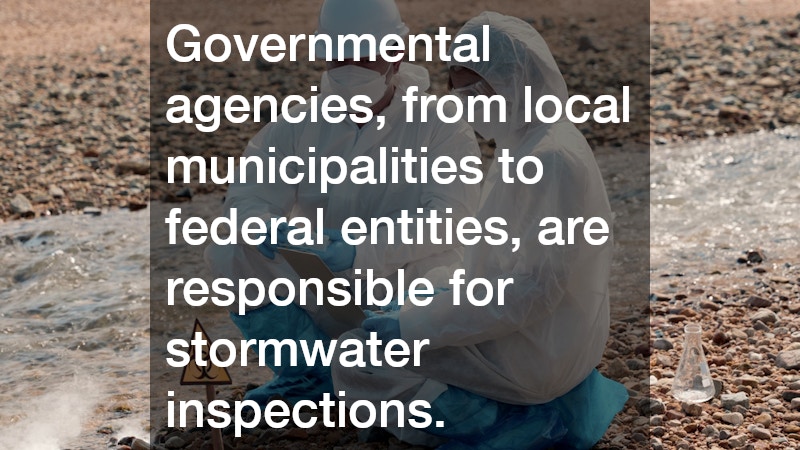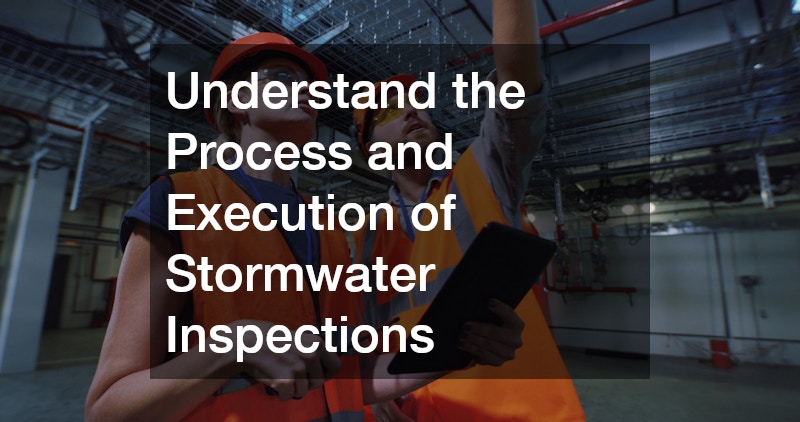In recent years, stormwater inspections have become critical components for maintaining environmental integrity, mitigating flooding risks, and ensuring compliance with regulatory bodies. This article delves into the importance and methodologies of stormwater inspections, elucidating the processes and requirements as understood by industry experts and regulators.
What are Stormwater Inspections?
Definition and Purpose
Stormwater inspections are systematic evaluations conducted to ensure that stormwater systems are effectively managing runoff, pollution, and potential environmental impacts. They serve as a foundational practice in urban planning and environmental conservation, ensuring that infrastructure operates within environmental safety parameters.
These inspections analyze various aspects of the stormwater systems, including drainage efficiency and pollutant filtration effectiveness. By maintaining these systems appropriately, cities can prevent costly damage to infrastructure and the environment, creating a more sustainable urban approach.
Furthermore, regular stormwater inspections promote proactive management rather than reactive repairs. Inspections allow for early detection of problems, minimizing potential long-term impacts on infrastructure and surrounding ecosystems.
Types of Stormwater Inspections
Different types of inspections cater to various aspects of stormwater management, including routine, compliance, and emergency inspections. Routine inspections ensure continual operational efficiency and identify incremental maintenance needs.
Compliance inspections are crucial for verifying adherence to local, state, and federal regulatory requirements. These inspections prevent legal issues and fines that can arise from non-compliance with established environmental codes.
Emergency inspections are triggered by unforeseen events like heavy rains or system malfunctions. They highlight urgent areas needing immediate attention and can prevent escalating environmental hazards during extreme weather events, safeguarding public and ecological health.
Why are Stormwater Inspections Important?
Environmental Impact Mitigation
Stormwater inspections are vital for environmental impact mitigation, as they help in identifying potential contaminants that could degrade ecosystems. Consistent inspections allow for the timely implementation of remedies that protect water quality and prevent habitat destruction.
Unchecked contaminant flow can lead to severe ecological consequences, including waterborne diseases and the loss of biodiversity. Regular evaluations of stormwater systems reduce these risks by ensuring that control measures function correctly and efficiently.
Moreover, by maintaining proper drainage systems, cities can prevent flooding and related damages, thus preserving both property and natural environments. This proactive mitigation of environmental impacts through diligent inspections is essential for long-term ecological health.
Regulatory Compliance
Another critical reason for conducting stormwater inspections is meeting regulatory requirements. These inspections verify that stormwater systems conform to the standards set by authoritative bodies, minimizing legal complications and potential financial penalties.
Regulatory bodies, encompassing local, state, and federal levels, enforce guidelines to sustain environmental and public safety standards. Regular stormwater inspections ensure these guidelines are consistently met, protecting organizations from liabilities.
Additionally, maintaining compliance fosters trust between communities, businesses, and regulatory agencies, paving the way for transparent environmental stewardship. It underscores the importance of vigilant routine and compliance inspections within stormwater systems management.
How are Stormwater Inspections Conducted?
Inspection Process
The stormwater inspection process encompasses several stages, beginning with preparatory assessments to understand system design and past performance. During on-site evaluations, inspectors examine the physical state and functionality of stormwater infrastructure.
Inspectors check for obstructions, system failures, and environmental compliance concerns to ensure smooth water flow. Following these evaluations, reports outlining necessary maintenance actions and long-term improvements are generated.
Subsequent follow-up actions address the immediate issues identified. These steps collectively ensure that stormwater management practices align with best industry standards and environmental requirements.
Tools and Technology Used
Modern technology significantly enhances stormwater inspection precision, employing drones, remote sensors, and innovative software for detailed analysis. These tools provide comprehensive data collection and real-time assessments, which are invaluable in evaluating extensive and complicated systems.
Drones can access hard-to-reach areas, capturing high-resolution images that inform inspections without the need for direct human entry. Remote sensors track stormwater flow and contaminant levels and automatically alert inspectors to irregularities, enabling timely interventions.
The integration of specialized software streamlines data management, allowing for more efficient monitoring and historical data tracking. These technological advancements empower inspectors to perform thorough and effective evaluations.
Who is Responsible for Conducting Stormwater Inspections?
Governmental Agencies
Governmental agencies, from local municipalities to federal entities, are responsible for stormwater inspections. These bodies ensure structured oversight, guide compliance, and safeguard infrastructural health and public safety.
While local agencies manage immediate urban or regional concerns, federal agencies provide broader directives and holistic environmental goals. Together, they enforce regulations and ensure that inspections are conducted with consistency and diligence.
Collaboration among various governmental levels ensures comprehensive stormwater management that respects ecological and community needs. This integrated approach is vital for maintaining consistent oversight and environmental responsibility.
Private Sector Involvement
Private environmental consulting firms play a critical role in supplementing governmental efforts with experience and specialized knowledge. These firms offer tailored inspection services, ensuring thorough evaluations and compliance guidance.
With technological advancements and niche experience, private entities can offer innovative solutions and efficient practices for stormwater inspections. Their contributions provide additional resources and flexibility that complement governmental frameworks.
The collaboration between public agencies and private firms fortifies stormwater management strategies, enhancing their scope and efficacy. Such partnerships enable a comprehensive approach to environmental stewardship and infrastructure maintenance.
Stormwater inspections are indispensable for safeguarding environmental quality and public safety against the backdrop of expanding urbanization and climate change. Understanding the who, what, and how of stormwater inspections equips stakeholders with the knowledge necessary to support and comply with essential environmental regulations.




